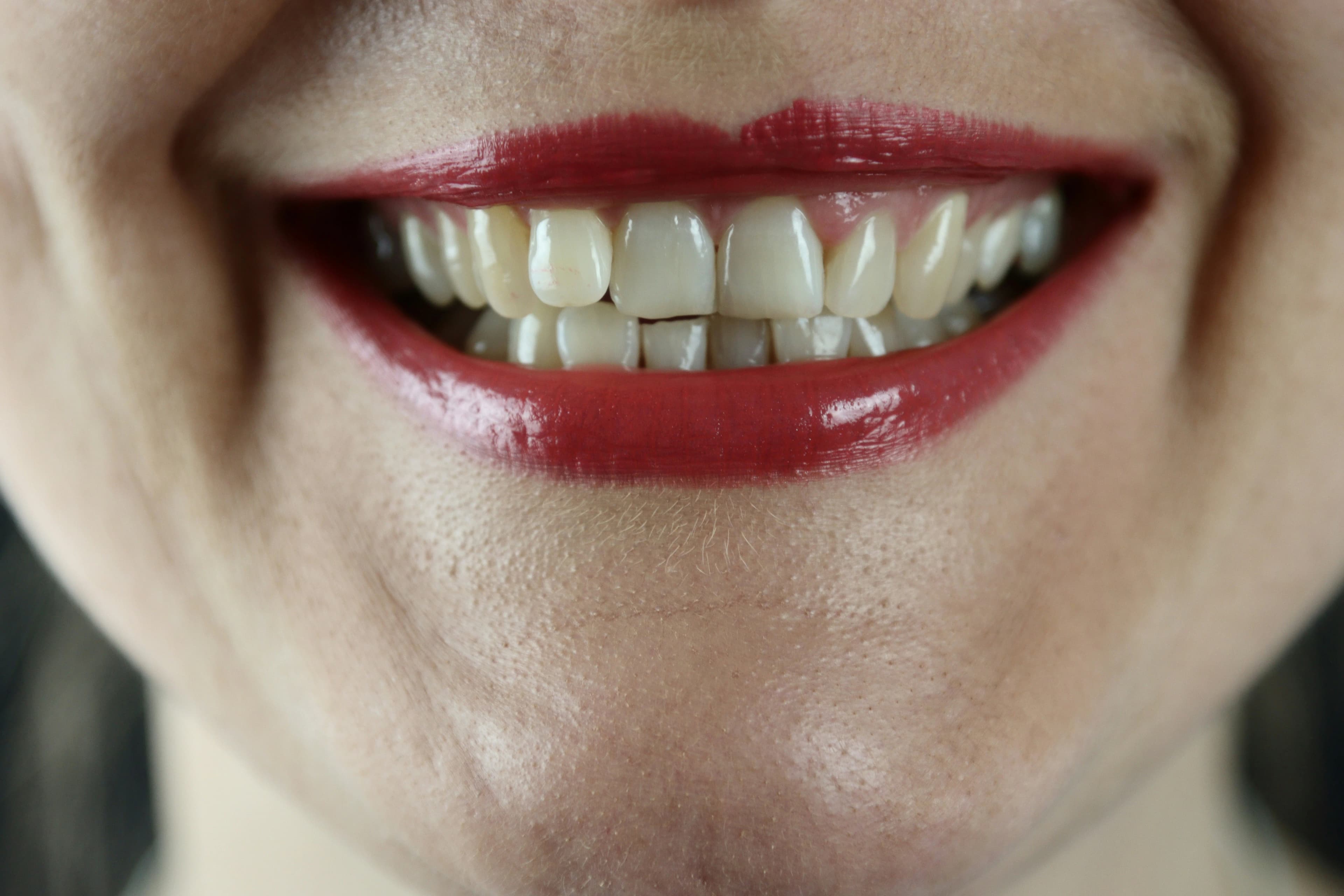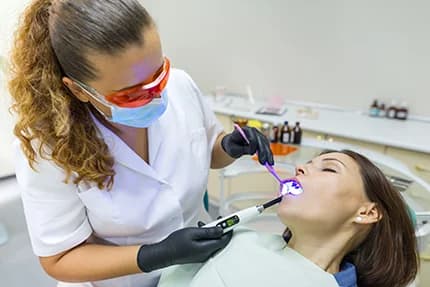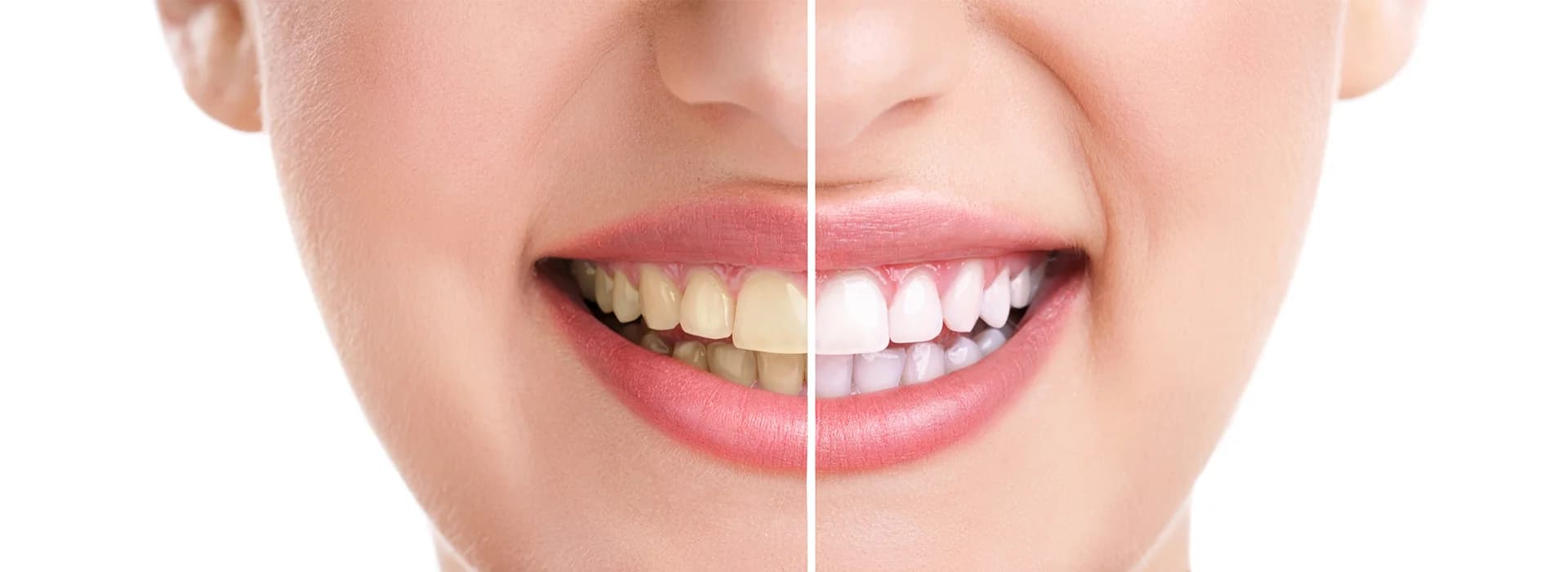A brighter smile doesn't just enhance your appearance—it can boost your confidence and improve your overall quality of life. Research shows that patients who undergo teeth whitening experience significant improvements in their oral health perception, self-esteem, and social interactions. Experiencing great teeth whitening before and after results can make a noticeable difference in how you feel about yourself and how others perceive you. If you're considering whitening your teeth, this guide will cover everything you need to know, from the benefits and different treatment options to expert tips on maintaining your results.
How Teeth Whitening Before and After Results Transform Your Smile
A brighter smile does more than improve your looks—it can completely transform your feelings about yourself. Seeing tooth whitening before and after results reveals the power of removing stains and discoloration, helping teeth look healthier and more youthful. Professional whitening treatments can lighten teeth by several shades, reversing years of discoloration. You can look and feel your best every day with a whiter smile.
The Psychological Benefits of a Whiter Smile
A bright smile doesn't just enhance your teeth—it positively affects your emotions, self-esteem, and social interactions. Let's explore how a whiter smile can impact different aspects of your life.
Increased Self Confidence
When your teeth look their best, you naturally feel more confident. A whiter smile allows you to smile freely without worrying about stains or discoloration, helping you feel more at ease in photos, conversations, and social gatherings. Many people find that they feel more comfortable speaking in public and expressing themselves without hesitation after whitening their teeth.
Improved First Impressions
Your smile is one of the first things people notice about you, and whiter teeth can instantly create a more positive and lasting impression. Whether it's a job interview, a first date, or a social event, a radiant smile can help you make a great impact.
Positive Impact on Social Interactions
A whiter smile encourages frequent and genuine smiles, naturally making interactions feel warmer and more engaging. Feeling good about your teeth makes you more likely to laugh, engage in conversations, and feel relaxed around others. This leads to stronger social connections and a greater sense of belonging.
Enhanced Professional Appearance
A bright smile doesn't just help in personal relationships—it also plays a role in professional success. People with healthy-looking, white teeth are often perceived as more competent, trustworthy, and put-together in the workplace. Whether in sales, customer service, or any client-facing role, a confident smile can help you make better connections and leave a strong professional impression.
Understanding the Causes of Tooth Stains and Discoloration

Tooth discoloration happens for various reasons, from lifestyle choices to natural aging and genetics. While some stains are external and can be removed with professional whitening, others are embedded deep within the tooth structure, requiring more advanced treatments. Understanding what's behind tooth discoloration can help you take the proper steps to restore and maintain a brighter smile.
Common Causes of Tooth Discoloration
Some forms of tooth discoloration are easier to reverse than others, and knowing the root cause of your stains can help determine the best whitening method for your smile.
Staining Foods and Beverages
Dark-colored drinks like coffee, tea, red wine, and cola contain tannins and pigments that cling to tooth enamel, causing noticeable stains over time. Acidic foods like tomatoes, citrus fruits, and berries can weaken enamel, making teeth more susceptible to staining.
Smoking and Tobacco Use
Tobacco products contain tar and nicotine, both of which penetrate the enamel and cause stubborn yellow or brown stains. Smoking affects tooth color and increases plaque buildup and gum disease, leading to an overall unhealthy smile.
Aging
The outer enamel layer naturally thins as we age, making the yellowish dentin underneath more visible. This gradual process leads to a duller, yellow-toned smile, even in individuals with excellent oral hygiene.
Genetics
Some people are naturally born with thicker or thinner enamel, which affects how white their teeth appear. Teeth with thinner enamel tend to appear more yellow due to the underlying dentin showing through. Unfortunately, genetic discoloration cannot be completely reversed, but whitening treatments can still help enhance brightness.
Tooth Decay and Plaque Buildup
Poor oral hygiene allows plaque and tartar to accumulate, leading to brown or yellow staining on the teeth. Cavities and decay can also create dark spots, making teeth look unevenly discolored. Regular brushing, flossing, and professional cleanings are essential to keeping teeth free of decay-related stains.
Excess Fluoride Exposure
Too much fluoride, especially during childhood, can lead to fluorosis, which causes teeth to have white, brown, or chalky stains. While mild cases may not be noticeable, more severe fluorosis can leave permanent marks.
Tooth Trauma
A sudden injury or impact to a tooth can cause internal bleeding within the dentin, leading to gray, brown, or even black discoloration. This type of stain is often challenging to remove with standard whitening treatments, and in some cases, a dental crown or veneer may be needed to restore the tooth's natural appearance.
The Difference Between Teeth Whitening and Teeth Bleaching

Many people use teeth whitening and teeth bleaching interchangeably, but they are different. Teeth whitening involves removing surface stains and restoring the natural color of teeth, while teeth bleaching uses stronger whitening agents to lighten teeth beyond their natural shade. Understanding the differences can help you choose the best treatment based on your needs and desired results.
Strength and Effectiveness
Teeth whitening treatments typically use milder formulas, such as whitening toothpaste or gels, to remove surface stains from food, drinks, and tobacco. On the other hand, good dental bleaching before and after results rely on higher concentrations of hydrogen peroxide or carbamide peroxide. These penetrate deep into the enamel to remove both surface and intrinsic stains. As a result, teeth bleaching before and after results tend to be more dramatic, often achieving a significantly lighter shade compared to regular whitening.
Suitability for Different Stains
Teeth whitening works best for extrinsic stains—discoloration caused by coffee, tea, red wine, or smoking. Teeth bleaching is more effective for intrinsic stains that come from aging, medication use, or deep enamel discoloration. Both treatments can be effective if your teeth have yellow or brown stains, but gray or bluish stains may require bleaching for noticeable improvement.
Safety and Sensitivity Risks
Teeth whitening is gentler and carries minimal risk of irritation when used correctly. However, teeth bleaching—especially with high concentrations of peroxide—can lead to temporary tooth sensitivity or gum irritation, particularly in those with thin enamel or existing dental issues. Professional bleaching treatments are safer than over-the-counter products, as they are supervised by a dentist who ensures proper application and minimizes discomfort.
Duration of Results and Maintenance
The longevity of before and after teeth whitening results varies depending on oral habits and lifestyle choices. Regular whitening treatments can last several months to a year, while professional teeth bleaching results may last up to two years with proper care.
Cost and Affordability
Teeth whitening is typically more affordable than bleaching since it uses lower-strength products that don't require professional supervision. Whitening toothpaste, rinses, and strips can cost anywhere from $10 to $50, while take-home whitening kits may range from $100 to $400.
In contrast, professional teeth bleaching is more expensive due to its higher effectiveness and immediate results. Depending on the procedure, in-office treatments cost between $300 and $1,500. While professional bleaching is an investment, it provides longer-lasting, safer, and more dramatic results than store-bought products.
Types of Teeth Whitening Treatments
If you're looking to brighten your smile, there are several teeth whitening treatments, each with its own benefits and effectiveness. Here are some of the most common whitening options and how they compare.
In-Office Teeth Whitening
Professional, in-office whitening is the fastest and most effective way to achieve a dramatically whiter smile. This treatment is performed by a dental professional using high-concentration whitening agents, often enhanced with light or laser technology to speed up the process. In just one visit (about 60-90 minutes), your teeth can become several shades lighter, making it the ideal choice for those seeking instant results.
Take-Home Whitening Kits
For those who prefer gradual whitening at home, custom whitening kits from your dentist balance professional strength and convenience. These kits include custom-fitted trays and professional-grade whitening gel, which is typically worn for a few hours daily or overnight for one to two weeks. While it takes longer than an in-office treatment, this method offers controlled, consistent results with less risk of sensitivity.
Over-the-Counter Whitening Strips
Over-the-counter whitening strips are a popular and affordable option for people looking to brighten their teeth without a dentist visit. These thin, flexible strips are coated with a lower concentration of whitening agents and applied directly to the teeth for 15-60 minutes daily for one to two weeks. While effective for mild surface stains, OTC strips take longer to show results and may not whiten as evenly as professional treatments.
Charcoal and Natural Whitening Methods
Charcoal toothpaste, baking soda, and other natural whitening remedies have gained popularity, but their effectiveness is often exaggerated. Charcoal-based products claim to "pull stains" from teeth but work mainly as abrasives that scrub away surface discoloration. However, excessive use can wear down enamel, leading to tooth sensitivity and long-term damage. Natural methods like baking soda and hydrogen peroxide rinses may provide mild whitening effects but are less reliable than dentist-approved treatments.
Hydrogen Peroxide vs. Carbamide Peroxide
Both hydrogen peroxide and carbamide peroxide are the primary whitening agents used in professional and at-home treatments, but they work differently. Hydrogen peroxide breaks down faster, releasing oxygen molecules that penetrate the enamel and lift stains quickly. This makes it ideal for in-office treatments, where fast results are desired.
On the other hand, Carbamide peroxide breaks down more slowly, making it a better choice for take-home whitening kits requiring longer wear times. While both are effective, hydrogen peroxide is typically used in higher concentrations, whereas carbamide peroxide offers a gentler whitening process with reduced sensitivity.
Why Professional Teeth Whitening is Safer Than DIY Methods

Man smiling while a dental professional in blue gloves holds up a tooth shade guide to match his teeth color, showing the difference in shades similar to teeth whitening before and after results.
While DIY whitening kits seem easy and affordable, they often come with hidden risks that can lead to tooth sensitivity, uneven results, or long-term enamel damage. Many over-the-counter products contain weaker bleaching agents, requiring weeks of use to achieve only minor improvements. Others contain harsh, unregulated chemicals that may cause gum irritation or excessive enamel erosion if misused.
Smile4Me Dental Care's professional teeth whitening treatments offer faster, safer, and more effective results customized to your unique dental needs. Here's why choosing an experienced dentist whitening before and after service is the best option for a healthy, radiant smile:
- Stronger and Safer Whitening Agents: In-office treatments use high-quality, professional-strength whitening solutions that lift deep stains without harming your enamel.
- Even, Long-Lasting Results: Professional treatments are applied precisely and evenly for a natural, bright finish.
- Minimized Sensitivity Risks: Protective barriers and gentle formulations reduce post-whitening discomfort.
- Immediate, Noticeable Results: Get a whiter smile in just one visit instead of waiting weeks with over-the-counter products.
Smile4Me Dental Care: Professional Teeth Whitening Before And After Results You'll Love
At Smile4Me Dental Care, we specialize in transforming dull, stained teeth into radiant, confident smiles. Our professional teeth whitening results speak for themselves, offering dramatic improvements in just one visit. Our advanced whitening treatments use professional-grade formulas and state-of-the-art technology to deliver safe, fast, and long-lasting results. Whether you want to reverse years of stains from coffee, wine, or tobacco or brighten your smile a few shades, we tailor each treatment to your needs.
Trusted Dentist for Teeth Whitening Services
When it comes to professional whitening, experience and expertise matter. As the top dentist in Astoria, we offer customized, safe, and incredibly effective results. Our professional-strength whitening agents penetrate the enamel, lifting stubborn stains while protecting your tooth structure. You should choose us for your professional whitening services because we provide the following:
- Advanced whitening technology that delivers faster, longer-lasting results.
- Customized treatment plans based on your specific dental needs and goals.
- Safe and supervised application to prevent sensitivity and enamel damage.
Our Other Cosmetic Dental Services
At Smile4Me, we don't just offer professional teeth whitening before and after treatments—we provide a full range ofcosmetic dental services designed to enhance and perfect your smile. Whether you're looking for whiter teeth, a straighter smile, or a complete transformation, our expert team is here to help.
- Ceramic Crowns: Ideal for restoring damaged, weakened, or discolored teeth. Our custom crowns blend seamlessly with your natural teeth, improving both function and appearance.
- Opalescence Whitening: A professional-grade take-home whitening system that provides gradual, controlled whitening with a stronger formula than over-the-counter products.
- Veneers: Perfect for correcting stains, chips, gaps, or uneven teeth, our custom porcelain veneers offer a flawless, Hollywood-worthy smile with long-lasting results.
Teeth Whitening After Care Tips

Smiling girl with long brown hair wearing a white shirt and denim overalls, holding a large orange toothbrush and holding a dental model against a light blue background.
Getting a brighter smile doesn't stop when you leave the dentist's office. Proper aftercare is essential to maintain your results and prevent new stains from forming. Follow these simple tips to keep your white teeth looking its best.
Avoid Dark Foods and Drinks
For the first 48 hours after whitening, your teeth are more vulnerable to staining because the enamel's pores are temporarily open. Dark-colored foods and beverages, such as coffee, red wine, tea, soda, berries, soy sauce, and tomato-based sauces, can easily seep into the enamel and cause discoloration. If avoiding them altogether isn't possible, try using a straw for drinks and rinsing your mouth with water afterward to minimize their staining effects.
Stick to the White Diet for 48 Hours
The White Diet consists of foods and drinks that are light in color and won't stain your freshly whitened teeth. Safe options include chicken, turkey, white fish, plain pasta, white rice, cauliflower, potatoes (without skin), bananas, and dairy products like yogurt or cheese. Drinking water and milk instead of dark-colored beverages will also help protect your new shade. Following this diet for at least 48 hours ensures that your whitening results stay bright and last longer.
Avoid Smoking and Tobacco Products
Tobacco is one of the biggest culprits of tooth discoloration. Nicotine and tar in cigarettes, cigars, and chewing tobacco quickly stain teeth with yellow and brown discoloration. If you've just invested in a whiter smile, avoiding smoking for at least a few days after treatment is essential to maintaining your results. Quitting or cutting back on smoking long-term will keep your teeth whiter and improve your oral health.
Schedule Regular Dental Cleanings
Professional cleanings help remove plaque and minor stains before they build up and darken your teeth again. Dentists recommend scheduling a cleaning every six months, but if you consume many stain-causing foods and drinks, you might benefit from more frequent cleanings. Keeping up with your cleanings is one of the easiest ways to extend the life of your before and after teeth whitening transformation.
Get the Best Teeth Whitening Before and After Results in Astoria
In conclusion, teeth whitening before and after results show how much a brighter smile can boost confidence, enhance appearance, and improve overall well-being. Understanding the causes of tooth discoloration, choosing professional whitening over DIY methods, and following proper aftercare are all keys to achieving and maintaining a whiter smile.
Smile4Me Dental Care offers safe, effective, and professional whitening treatments tailored to your needs. Book your appointment online today or walk in for same-day service—your perfect smile is just one visit away!
